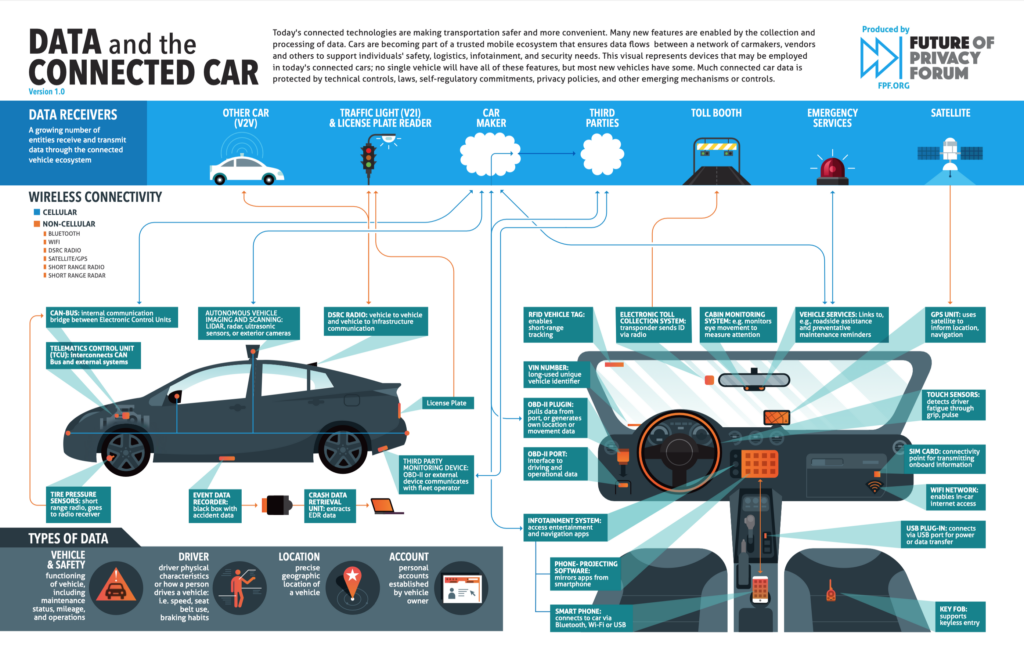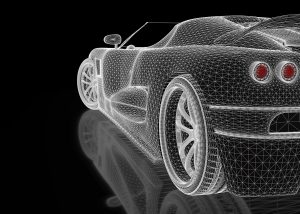CPDP2020 Panel: The Future Is Now: Autonomous Vehicles, Trolley Problem(s) and How to Deal with Them
Last week, FPF brought together a panel of technology, legal, regulatory, and business voices to discuss “The Future is Now: Autonomous Vehicles, Trolley Problem(s) and How to Deal with Them” at the 13th annual Computers, Privacy, and Data Protection conference.
The premise of the panel was that autonomous and highly automated vehicles are likely the first product that will bring AI to the masses in a life-changing way. They rely on AI for a variety of uses: from mapping, perception and prediction, to self-driving technologies. Their promise is great: increasing the safety and convenience of our cities and roads. But so are the challenges that come with it, from solving life and death questions to putting in place a framework that works for the protection of fundamental rights of drivers, passengers and everyone physically around them. This panel of experts discussed connected and automated technology, law, policy, and proposed a EU-US comparative perspective to discuss essential questions. The panel was moderated by Trevor Hughes (CEO, IAPP), and the panelists were Sophie Nerbonne (Director, CNIL), Andreea Lisievici (Head of Global Data Protection Office, Volvo Cars), Mikko Niva (Group Privacy Officer, Vodafone), and Chelsey Colbert (Policy Counsel, Mobility and Location, FPF).
The speakers answered many questions, including: How much data and what type of data runs through all systems of an autonomous vehicle? What are the benefits of autonomous vehicles and what are the risks to individual rights? How can they be balanced? They also discussed the infamous thought experiment “the Trolley Problem” and its application to connected and automated vehicles in the real world.
Andreea Lisievici (Head of Global Data Protection Office, Volvo Cars) started the panel with demystifying what we are talking about when we are talking about “connected and autonomous cars.” She gave an overview of the levels of autonomy in vehicles: Level 0 – no automation; Level 1 – driver assistance; Level 2 – partial driver automation; Level 3 – conditional driving automation; Level 4 – high driving automation; and Level 5 – full driving automation. Commercial vehicles currently on the market are considered level 2 (or “2+” or 3), while some other companies doing AV testing are reportedly at level 4.
Mikko Niva (Group Privacy Officer, Vodafone) commented on the vast ecosystem of parties in the connected and automated car ecosystem.
Sophie Nerbonne (Director, CNIL) reminded everyone that most of the data in this complex ecosystem is personal data. She recounted that when the CNIL began working with French OEMs a couple of years ago, they weren’t fully aware of how much “technical data” was in fact personal data.
Indeed, the CAV ecosystem is vast and interconnected; we must think beyond the individual car and consider the broader ecosystem that will include city infrastructure, such as streetlights, pedestrians, other vehicles, and even other objects, such as delivery robots. These “V2X” (vehicle to everything) technologies, which includes V2V (vehicle to vehicle), V2I (vehicle to infrastructure), and V2P (vehicle to pedestrian), bring in parties such as car manufacturers, telecom providers, third party apps and services, and local governments. This ecosystem presents challenges and opportunities for not just personal car ownership, but also rental companies, rideshare and ride-hailing companies, delivery robots, micro-mobility such as scooters, and modes of transportation or freight delivery that are underground and in the air.
The majority of this information is likely to be personal data, or capable of being linked to a person, and there are many players and data flows for organizations to consider, including drivers, passengers, pedestrians, and employees. [See here for FPF infographic about data and the connected car]. Data protection impact assessments are an important tool available to organizations, and the speakers agreed that while privacy and ethics by design is important, operationalizing this can be a challenge. Entities must look beyond legal obligations and consider how they will earn and maintain consumer trust.
As for the Trolly Problem, the speakers agreed that… it is not the right problem, since it does not ask the right question. Real life scenarios where connected/autonomous vehicles need to “make decisions” have much more parameters to take into account and many more options than what the Trolly Problem proposes. Watch the full recording of the panel by following this link.




